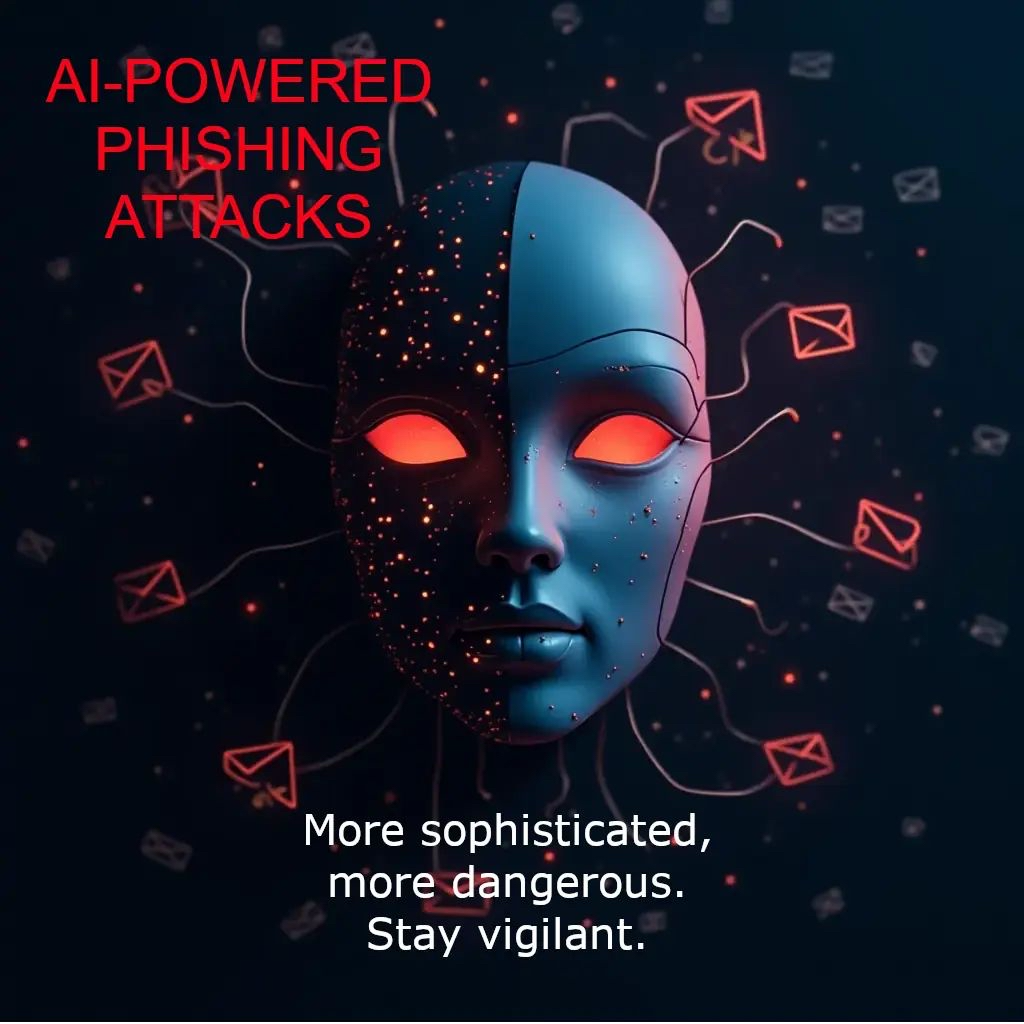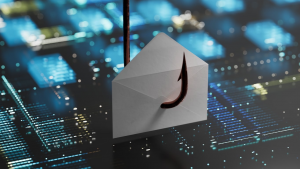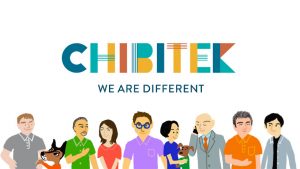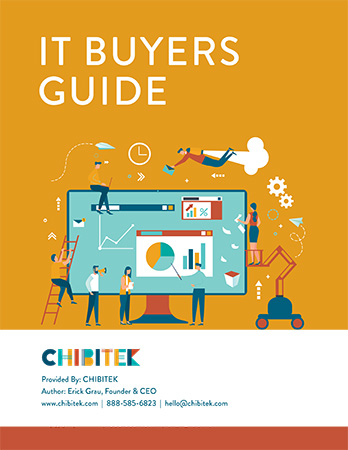
This image depicts the integration of AI technologies in cybersecurity measures, emphasizing how artificial intelligence is employed to detect and counteract evolving cyber threats.
The Quiet Threat: How AI Is Reshaping Cybercrime and Leaving Small Businesses Exposed
In a quiet office in downtown San Francisco, a midsize marketing agency received what appeared to be a routine invoice from a long-time vendor. The email was polite, perfectly formatted, and even referenced an upcoming campaign the team had discussed just the day before. What no one noticed—until too late—was that the email wasn’t real. It was generated by AI, informed by breached inbox data, and crafted to bypass every instinct and filter the agency had in place.
This wasn’t a story from the future. It happened last quarter.
As artificial intelligence transforms industries, it is also supercharging the most sophisticated cyber threats ever seen. What was once the domain of lone hackers or dark web crime rings is now automated, scaled, and smarter—powered by tools that were once meant to serve productivity and creativity. For PR firms, design studios, healthcare providers, and every other knowledge-driven business, the question isn’t whether you’ll encounter an AI-powered threat. It’s whether you’ll see it in time.
The Automation of Malice
Generative AI is now part of the attacker’s toolkit. Deepfake voice calls mimicking CEOs. Custom phishing lures that reference internal Slack conversations. Malware that rewrites itself based on the antivirus you’re running. These aren’t isolated headlines—they’re becoming patterns.
The cybercriminals of 2025 aren’t necessarily skilled coders. They’re AI tacticians. They know how to feed models with scraped public data, intercepted messages, or internal credentials bought on the dark web. From there, the AI handles the rest: language, tone, context, and timing.
A recent report from Business Insider highlights how AI-generated deepfake voices have already been used to steal millions, including a $25 million bank scam orchestrated entirely by synthetic voices and fraudulent Zoom calls.
“We’re seeing phishing attempts that are indistinguishable from real communications—even to the trained eye,” says Minako Hinman, CyberSecurity Lead at Chibitek. “Some of them are better written than legitimate client emails.”
The New Vulnerabilities We Don’t Talk About
A more subtle but dangerous threat is the corruption of internal AI tools. Imagine your AI-based helpdesk being manipulated through prompt injection. Or worse, your marketing automation platform quietly skewing results based on poisoned training data. These are vulnerabilities few businesses prepare for, mostly because they don’t yet have a vocabulary for them.
And then there’s the human factor: deepfakes. Not the YouTube novelty kind—but real-time impersonations over Zoom, or AI-generated voicemails that exploit urgency and trust. For creative agencies and public-facing professionals, this creates a chilling new threat vector: their own digital persona.
Compliance Won’t Save You
Security compliance frameworks like HIPAA, SOC 2, or ISO 27001 have long been the benchmark for operational maturity. But as AI rapidly expands the threat surface, these frameworks show their age. They’re reactive, not predictive. Structured, not dynamic.
“The reality is, compliance is now the floor, not the ceiling,” says India Faison, Project Manager at Chibitek. “It’s not enough to tick the box anymore—you need systems that can think and learn like the adversary.”
That’s echoed in Deloitte’s recent Cybersecurity Outlook 2025, which warns that AI-enabled attackers are already outpacing traditional defenses and that incident response must evolve into intelligent detection and adaptation.
Small Businesses, Big Risk
In a cruel twist, AI-powered threats disproportionately affect the least prepared: small to mid-sized businesses. While enterprise giants invest in AI-enabled SOC teams and 24/7 threat hunting, most SMBs rely on a few IT staff or outsourced providers to manage everything—from laptop updates to ransomware recovery.
And attackers know this. According to Axios, the U.S. saw a dramatic surge in cybercrime reports from SMBs in Q1 2025 alone, with AI-enhanced phishing and impersonation schemes leading the way.
It’s not personal. It’s scalable.
Defensive AI: Not Optional Anymore
At Chibitek, the shift is clear. Clients are no longer asking if AI will impact their security posture—they’re asking how fast they can adapt.

AI Email Phising Hook
“We’ve moved from static defenses to dynamic detection,” explains William Gillett, Chibitek’s Director of Development and Automation. “That means AI in your EDR, your email gateway, your Slack channels. Everywhere attackers could land.”
The new standard isn’t just layered defense—it’s adaptive, AI-aware security:
-
Endpoint detection that learns behaviors.
-
Alerting systems that connect anomalies across SaaS tools.
-
Secure identity frameworks with biometric and TOTP authentication.
Even mainstream MSP platforms are evolving. Kaseya’s Graphus anti-phishing tool now integrates real-time detection of AI-generated phishing emails, while their broader Kaseya 365 suite provides enterprise-grade security automation for SMBs.
The Next Two Years Will Define the Decade
Internal modeling from Chibitek Labs aligns with trends shared by the Cyber Threat Alliance: AI-driven cyber threats will outnumber traditional exploits within the next 24 months.
Expect:
-
Phishing emails that learn and adapt.
-
Impersonation scams that run in real-time.
-
SMBs without proactive defenses to become weekly targets.
Those who build AI into their defenses now will not only protect their operations—they’ll safeguard their reputation.
This Isn’t Just a Tech Issue—It’s a Business One
For leaders in PR, media, and creative industries, the reputation stakes are even higher. One breach can mean a headline. A data leak can end client relationships. In a world where trust is currency, AI-powered cybercrime is more than a technical threat—it’s an existential one.
Now is the time to act, audit, upgrade, and educate. AI is coming for every vulnerability we haven’t imagined yet. But it’s also giving us new tools to fight back—if we’re ready to use them.
🚀 Ready to Work with Award-Winning IT Experts?
Whether you’re scaling your creative agency or leading a fast-moving startup, we’ve got the tools, team, and mindset to help you grow.
Start with a FREE AI & Network Assessment to identify vulnerabilities and safeguard your data against cyberthreats.
Click here to schedule your FREE AI & Network Assessment today!
We Make IT Effortless, So You Can Disrupt, Create, and Grow












